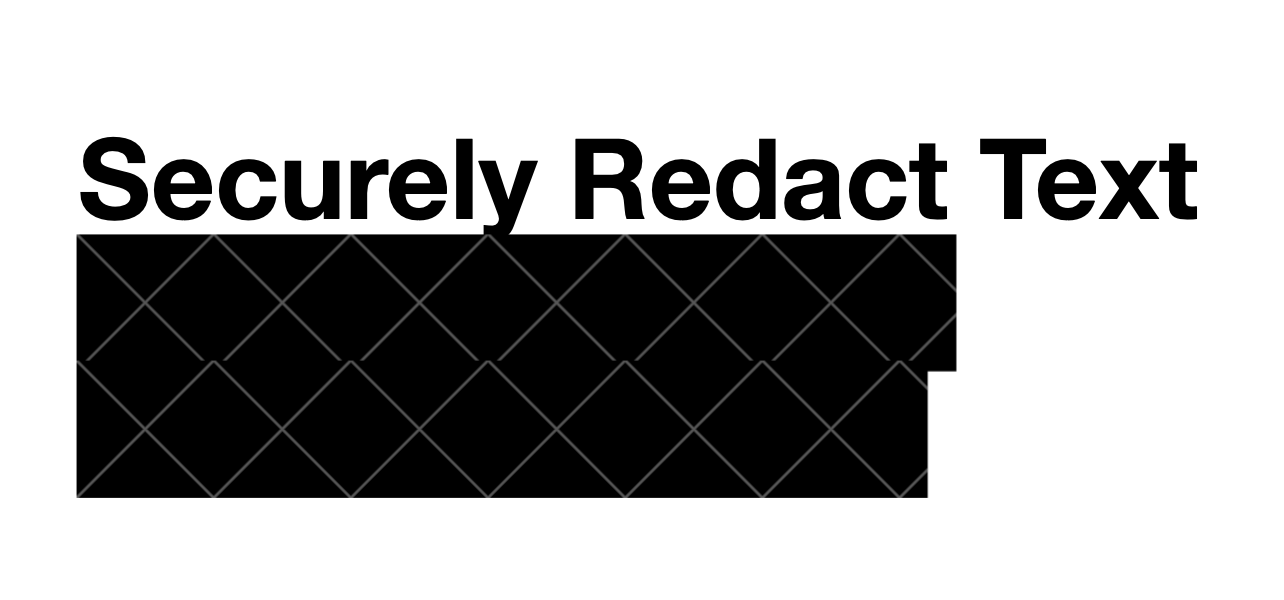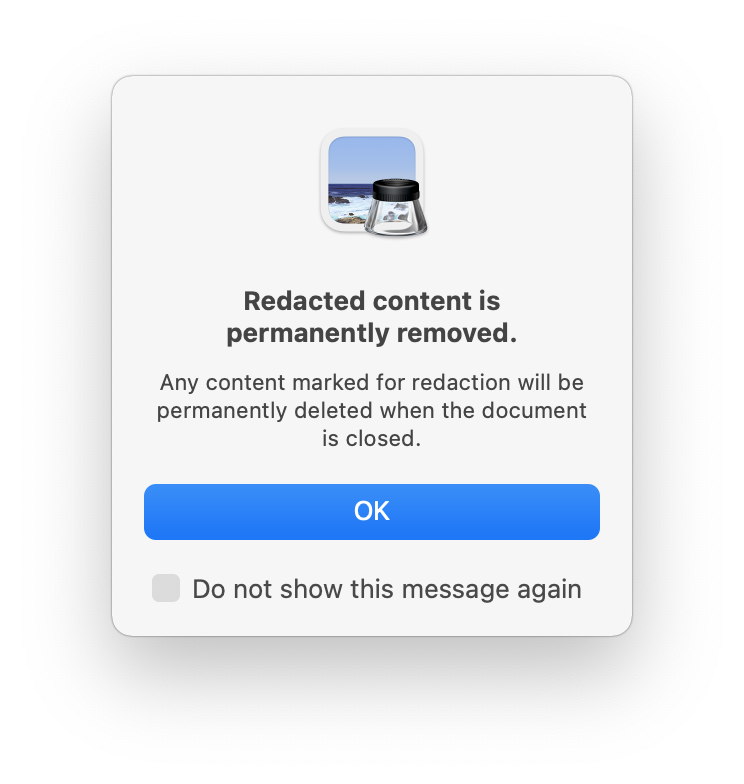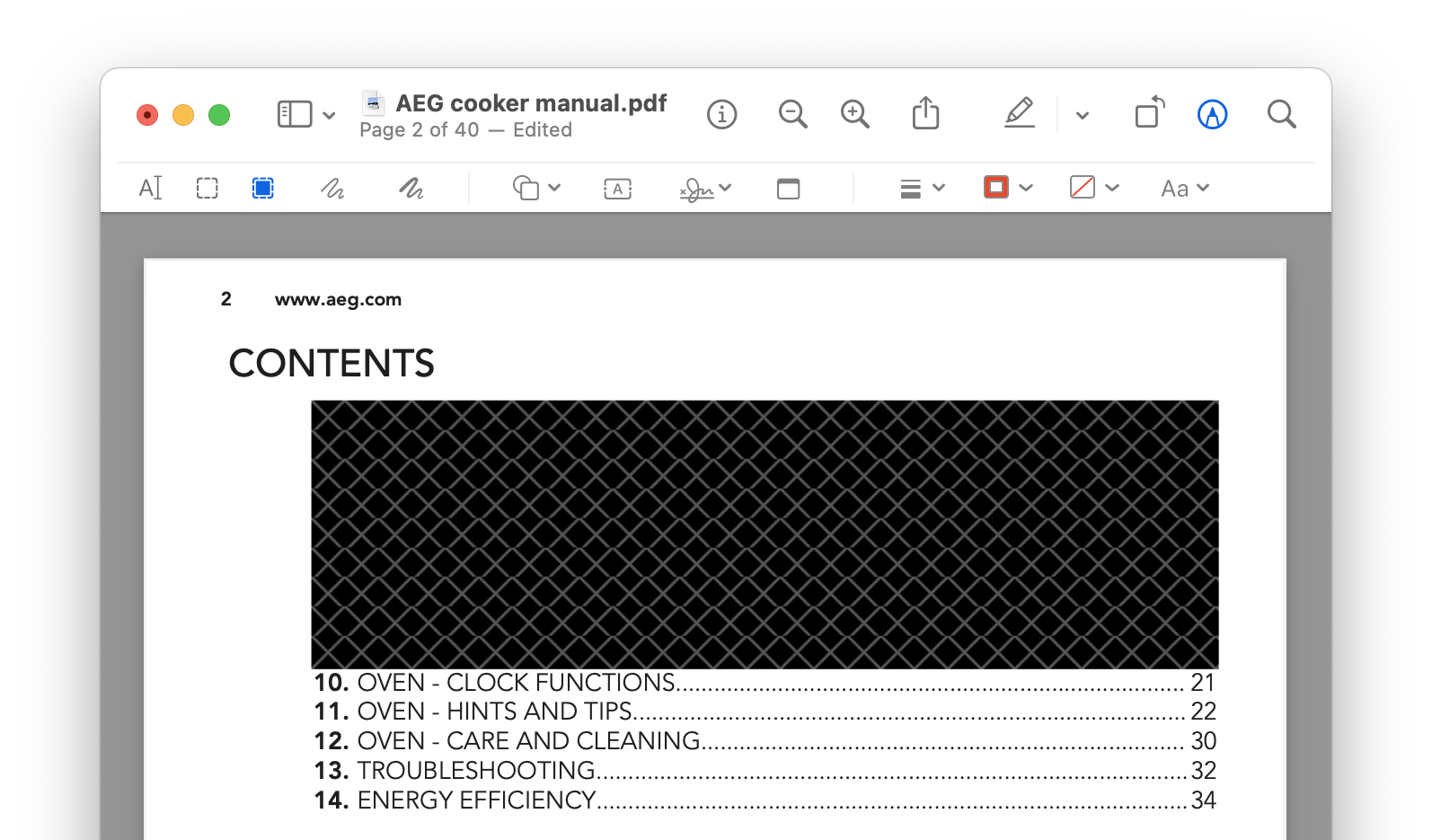Securely Redact Text in PDFs with Apple Preview on Mac
Posted on
by
Kirk McElhearn

Sometimes you want to share a PDF with someone, yet hide some of the information it contains. For example, you may need to provide a bank statement to someone to prove you have a bank account, but not want to show the balance.
There are a number of ways you can do this, and one way that has been common for many people is using apps to pixelate the text you want to hide. It looks like this:
![]()
But a security researcher at Bishop Fox has shown that this sort of pixelization is reversible, using a simple tool. Essentially, it attempts to see what characters would like like when pixelated, then, through a sort of reverse engineering, figures out the original text. While this isn’t a simple process, it is fast and effective.
Fortunately, if you use a Mac, you have access to a much more powerful redaction tool in Preview, the app you can use for viewing PDFs and images.
Open a PDF in Preview, then click the Markup button (top right), then click the Redact button (top left). You can also choose Tools > Redact, to activate the redaction tool, without engaging Markup.

When you click the Redact button, Preview presents a dialog explaining what this does.

First, make sure to make a copy of the file you want to redact; once you’ve redacted text and saved the document, you cannot undo the change. (It’s a good idea to not check Do not show this message again, so you are reminded of the permanence of this change each time you use it.)
Drag your cursor over the text you want to redact, and you’ll see that it becomes black with hash marks.

You can change the redaction as you edit; drag your cursor over text to add the black redaction, drag again to remove it. If you hover your cursor over redacted text, you can see what the text is. But as soon as you save the document, the redaction is permanent.
The file is now safe to send to anyone. Obviously, you’re unlikely to redact as much as I have in the above example; generally, you’ll only want to hide things like email addresses, phone numbers, money amounts, or names. So you can redact individual words, or paragraphs or pages as needed.
How can I learn more?
 Each week on the Intego Mac Podcast, Intego’s Mac security experts discuss the latest Apple news, security and privacy stories, and offer practical advice on getting the most out of your Apple devices. Be sure to follow the podcast to make sure you don’t miss any episodes!
Each week on the Intego Mac Podcast, Intego’s Mac security experts discuss the latest Apple news, security and privacy stories, and offer practical advice on getting the most out of your Apple devices. Be sure to follow the podcast to make sure you don’t miss any episodes!
You can also subscribe to our e-mail newsletter and keep an eye here on The Mac Security Blog for the latest Apple security and privacy news. And don’t forget to follow Intego on your favorite social media channels: ![]()
![]()
![]()
![]()
![]()
![]()
![]()